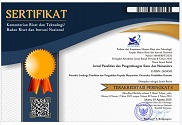Metode Tongkat Berbicara (Talking Stick) dalam Pembelajaran Keterampilan Berbicara Menanggapi Cerita Pendek
DOI:
https://doi.org/10.23887/jppsh.v2i1.14007Keywords:
Implementation, Speech Skills, Responding to Short Stories, Stick TalkingAbstract
This study aims to describe the improvement of speech skills in responding to students' short stories through the application of the stick talking method. This study is based on learning to speak in response to the short story on the students in the category of low. The method used in this study is qualitative descriptive with a classroom action approach that describes speaking skills to respond to classical short stories and speaking skills in response to a short story through a talking stick method. in practive both two cycles consisting of the planning stage, the execution of the action, the observation, and the reflection. The subject of this study were samples dran bypurposive sampling technique of 30 students of class VII-C SMP Negeri 40 Medan. The results showed that students 'ability to respond to the students' short story increased after talking stick method was applied in the pre-cycles, the average score was 52.33 and the percentage of classical completeness was 20% After applying the method of talking stick ), the result of the students 'test scores on the first cycle obtained an average score of 69.5 and increased to 71.67 in the second cycle test.Based on the percentage of students' classical completeness in cycle I 66.67% increase in cycle II 76.67%. The research concluded that the application of talking stick method can improve the speaking skill in responding to the short story in the students of class VII-C SMP Negeri 40 Medan.
Downloads
Published
Issue
Section
License
Authors who publish with the Jurnal Penelitian dan Pengembangan Sains dan Humaniora agree to the following terms:
- Authors retain copyright and grant the journal the right of first publication with the work simultaneously licensed under a Creative Commons Attribution License (CC BY-SA 4.0) that allows others to share the work with an acknowledgment of the work's authorship and initial publication in this journal.
- Authors are able to enter into separate, additional contractual arrangements for the non-exclusive distribution of the journal's published version of the work (e.g., post it to an institutional repository or publish it in a book), with an acknowledgment of its initial publication in this journal.
- Authors are permitted and encouraged to post their work online (e.g., in institutional repositories or on their website) prior to and during the submission process, as it can lead to productive exchanges, as well as earlier and greater citation of published work. (See The Effect of Open Access)









